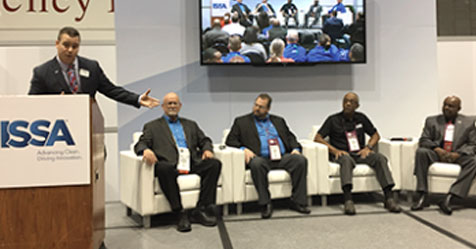Following a challenging pandemic year of shuttered buildings, laid-off workers, and lost accounts, cleaning contractors have learned what it means to be resilient. Fortunately, their persistence is paying off. As we move through the summer of 2021, things are looking up.
When recently asked, “How’s business?” the owner of a large South Florida cleaning company said, “It’s booming. We can’t find enough people to work for us.”
Other contractors are likely saying the same thing: they need more workers. In the meantime, they’re looking to get the most out of the employees they do have. That means improving cleaning efficiency, and one way to do that is to increase custodial training.
Efficiency is defined as the state or quality of being efficient or able to accomplish something with the least waste of time and effort; competency in performance; accomplishment of or ability to accomplish a job with a minimum expenditure of time and effort.
How can we measure cleaning efficiency?
We are not measuring cleaning effectiveness, which refers to the quality of cleaning. We measure effectiveness through appearance, customer feedback, and testing systems such as ATP monitors. Instead, we are examining the ability to accomplish a job satisfactorily “with a minimum expenditure of time and effort.”
Measuring cleaning efficiency requires keeping track of worker productivity rates. For an accurate picture that does not involve estimating, cleaning contractors should examine workloading methods. Based on the cleaning specifications for the facility, the contractors must break down every cleaning task performed and the amount of time it takes to complete it. Then they can assign frequencies.
With these measurements in hand, the contractors can compare their timeframes to what is listed in ISSA’s Cleaning Times, which is now built into many janitorial software programs. This not only makes bidding more straightforward, but it also helps us determine the efficiency of current cleaning workers.
Is training worth the investment?
Historically, one of the problems many contractors have experienced with custodial training is cleaning worker turnover rates. These rates can be as high as 300%, meaning one custodial position must be filled three times during a year. It makes contractors question whether it is worth investing time and money in training if the worker is likely to leave for another job in a short period.
Another concern is the strong likelihood of trained custodial workers quickly returning to their old, less efficient cleaning habits. This problem is not unique to the cleaning industry, posing challenges for a wide range of businesses. Employers need ways to counteract what seems to be human nature.
In response, many contractors have begun using digital learning tools including cleaning equipment with onboard “tutors.” These training systems may involve a video library contained in a simplified tablet that is placed directly on the cleaning equipment. This convenient system allows workers to learn and review best practices immediately before beginning their tasks.
A study, “Learning from Online Video Lectures,” published in the Journal of Information Technology Education, indicates these onboard tutors may be one way to address training concerns.
In this study, business students accessed online videos to learn challenging financial accounting methods. The videos were available 24/7, allowing the students to watch them whenever it was convenient. After using the videos, average students better understood the training topic, earned higher grades, and demonstrated a greater ease of learning. Weaker students were less likely to withdraw from the training courses.
In other words, the videos did improve training. Further, the professional cleaning industry can interpret reduced course withdrawal rates as reduced worker turnover rates.
The study also showed that many students found the videos to be a helpful tutoring resource. They especially liked that they could replay segments and stop the lecture to better understand the content.
This pause-and-play capability is possible with some onboard tutors as well. The programs allow cleaning workers to repeat segments of the training and then practice what they have just been taught. The ability to immediately practice a skill can enhance learning immensely.
Improving worker efficiency is an ongoing journey. The more efficiently cleaning workers can perform their tasks, the more competitive contractors can be when bidding—even during a worker shortage—helping them grow their businesses long term.




